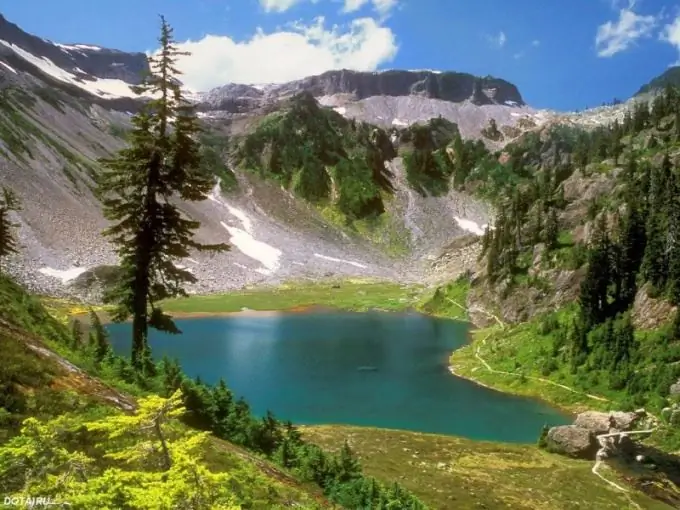There are water bodies that do not have a direct connection with the sea, for a variety of reasons. Lakes are those that have a depth of more than 2 meters and arose naturally.

Instructions
Step 1
A lake can be a closed depression on the surface of the earth, or water bodies that have arisen as a result of geological movements of the soil or rock falls. If the river changes its course, a lake may also appear in the place of its old path. The main criterion for dividing water bodies is their depth and mode of origin. Reservoirs, the depth of which is less than 2 meters, and small in size are most often called ponds. Temporary small bodies of water that arise as a result of prolonged rains or spring floods are called puddles.
Step 2
The stagnant waters resulting from the formation of depressions are most often located in the mountains. This is due to the fact that rocks are subject to various movements - raising and lowering the rock. As a result of this movement, grabens, troughs, and pits appear. Lakes and ponds also arise as a result of the collapse of underground caves, most often this happens with limestone rocks. Reservoirs appear in those places where limestone has dissolved and moisture has accumulated in the grooves. These lakes are called karst lakes, and you can see them in the limestone Alps or in the south of Germany. Karst lakes are the remnants of the last ice age. At this time, they formed in troughs dug by ice, and filled with water from the melting of these ice.
Step 3
In many cases, sediments of lateral and terminal moraines formed around these troughs, which is why many karst lakes have very steep back and side walls. These lakes can be seen in the foothills of the Alps, in the north of Germany, in Northern Europe and North America. Hollow lakes have the same origin, coming from the ice age, and their bed was filled with water from the glacier that was there earlier. Such troughs formed where the bottom moraine moved, leaving blocks of ice in the way. These lakes are used for watering livestock and for the needs of fire brigades.
Step 4
Almost perfectly round mountain lakes are most often of volcanic origin, and are located mostly in the craters of extinct volcanoes. In this case, the volcanic cone gradually collapsed, and the crater funnel was filled with water. Many lakes of volcanic origin can be found in the United States, and smaller ones, not exceeding 2 km, abound in the Eiffel.
Step 5
Many lakes did not arise as a result of subsidence of land, but as a result of damming. Most often, such lakes are formed as a result of a landslide in mountainous areas, or as a result of a collapse of rocks in mountainous and surrounding areas. The reason can also be shoals on the rivers, when the river bed is brought in by various sediments and the river as a result changes the channel.







